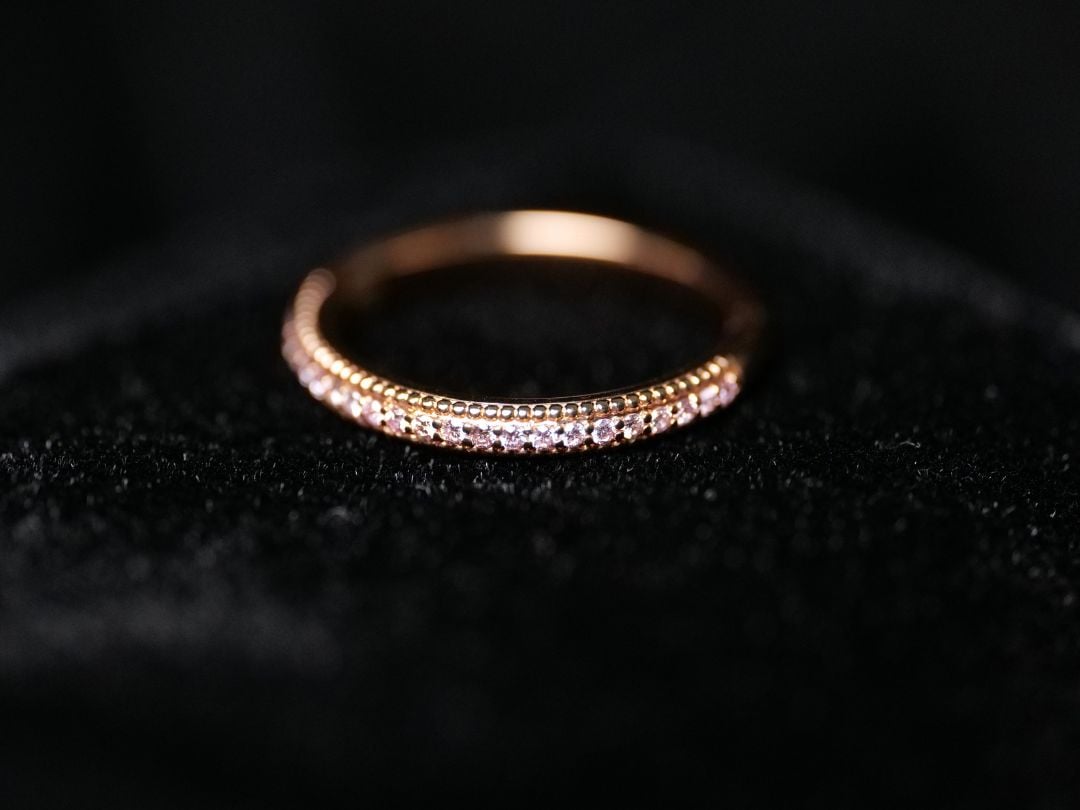How is rose gold made?

Peter Carl Fabergé, the renowned jeweller and goldsmith known for his decorative Fabergé eggs, was one of the first to use rose gold in his work.
In the United States, rose gold wasn't widely used for jewellery until the 1920s, when it became fashionable for engagement rings. And Cartier's rose gold jewellery set with precious stones was a key factor in the rise of rose gold’s popularity.
Gold purity
To understand how rose gold is made, we first need to look at pure yellow gold.
Although the weight of gold is measured in troy ounces (1 troy ounce = 31.1034768 grams), the purity of gold is measured in carats. The purist gold for jewellery is considered 24 carats.
The measurement of gold purity mixed with other metals is known as ‘caratage’. For instance, 24 carat gold is pure gold that’s not been mixed with any other metals. Lower caratages contain less gold, such as 18 carat gold which contains 75% gold and 25% other metals, usually copper or silver.
The minimum caratage for an item to be called gold varies by country. In Australia, 9 carat is the lowest caratage permitted to be called gold.
What's the difference between 24 and 9 carat gold?
The difference between 24 carat and 9 carat gold is mainly the durability and colour. Due to the softness of 24 carat gold, it’s alloyed with other base metals to increase its hardness and appearance.
24 carat gold, although purer, is much softer than 9 carat gold. The lower the carat rating, the higher the ratio of base metals such as silver, palladium, nickel or zinc. Let’s be precise with the numbers*:
9 carat gold is 9/24 = 37.5% gold
14 carat gold is 14/24 = 58.3% gold
18 carat gold = 18/24 = 75% gold
24 carat gold = 24/24 = 100% (pure) gold
Gold colour
Caratage
Gold (Au)
Silver (Ag)
Copper (Cu)
Yellow gold
9k
37.5%
42.50%
20%
Yellow gold
14k
58.30%
30%
11.70%
Yellow gold
18k
75%
15%
10%
White gold
9k
37.5%
62.5%
NA
White gold
14k
58.30%
32.20%
NA
Rose gold
9k
37.5%
20%
42.5%
Rose gold
14k
58.30%
9.2%
32.5%
Rose gold
22k
91.7%
NA
8.40%
*The base metal (Ag, Cu) percentages will vary depending on the refiner.
What is rose gold made of?
So, now we understand how gold is made up, we can look at the increasingly popular rose gold. Also known as red or pink gold, 9 carat rose gold is similar to 9 carat yellow gold but its metal and alloy composition is switched – with a higher percentage of copper to produce the unmistakable pink hue.
The percentage of copper added will determine the final colour of rose gold. Similarly to white gold, some people may be sensitive to rose gold as copper is not hypoallergenic.
Does rose gold tarnish?
You might find its appearance changes marginally over time, turning deeper and somewhat redder. However, this gradual patina is caused by the copper oxidising and developing a darker sheen and a jeweller can buff and polish away this so it’s less apparent.
Where to buy rose gold in Perth
You can find The Perth Mint’s jewellery store inside our landmark heritage listed building, established by Britain’s Royal Mint in 1899 at our iconic East Perth site in Hay Street.
Many of our high-end, hand-selected rose gold jewellery pieces are accompanied by a certificate of authenticity, as well as the peace of mind that comes with choosing to make a purchase from a Government of Western Australia-owned enterprise with a long-standing reputation for quality and integrity.
Our experts will be happy to assist you to try on different jewellery pieces. See how they look against your skin and ensure your rose gold piece reflects your true individuality and skin tone.
Come and explore today or book an appointment now.
Sources
*Stats provided by the World Gold Council: https://www.gold.org/about-gold/about-gold-jewellery
https://www.britannica.com/art/Faberge-egg
https://www.cooksongold.com/blog/buying-guide/what-is-rose-gold-and-why-is-it-so-popular/
https://vogueballroom.com.au/what-is-rose-gold-made-of/
https://www.theraregemstonecompany.com/gem-blog/the-difference-between-yellow-white-and-rose-gold












